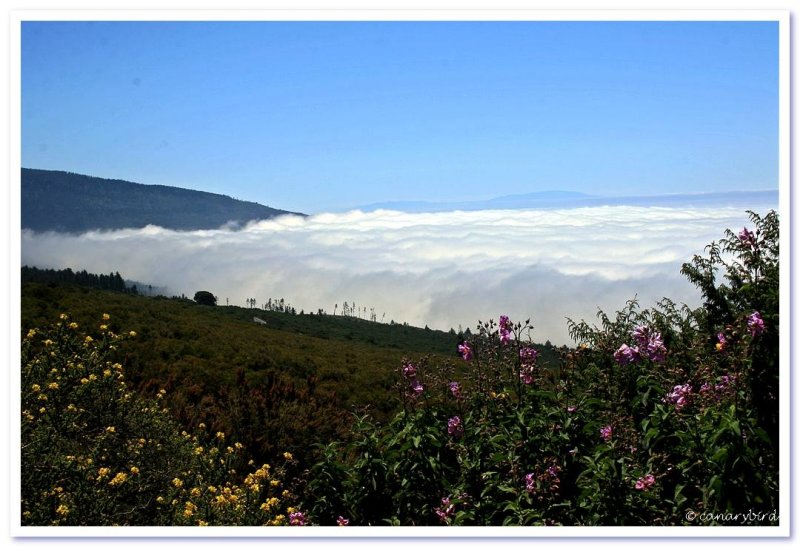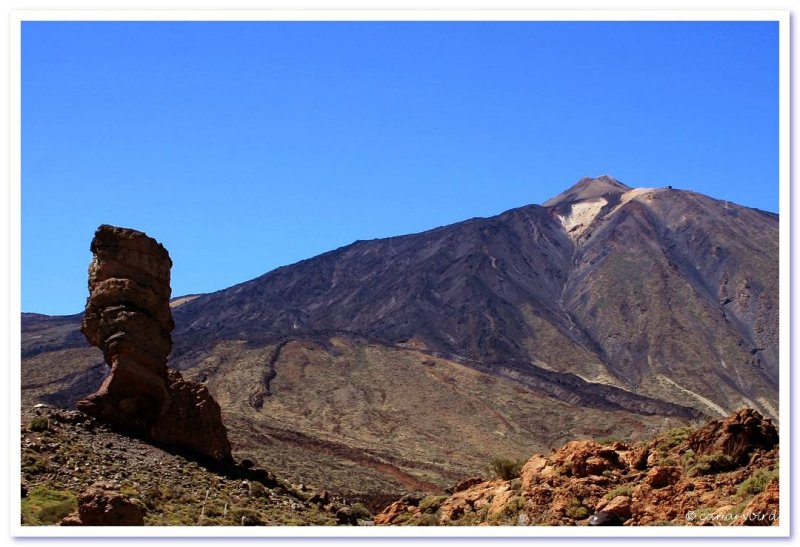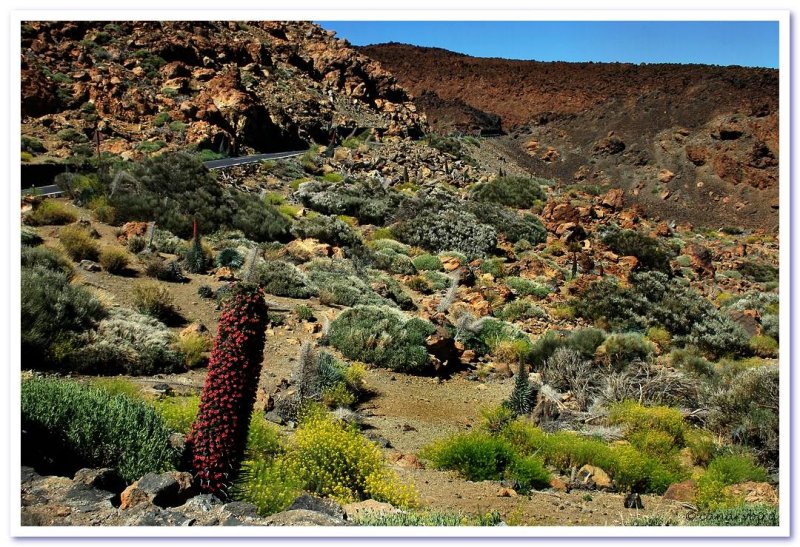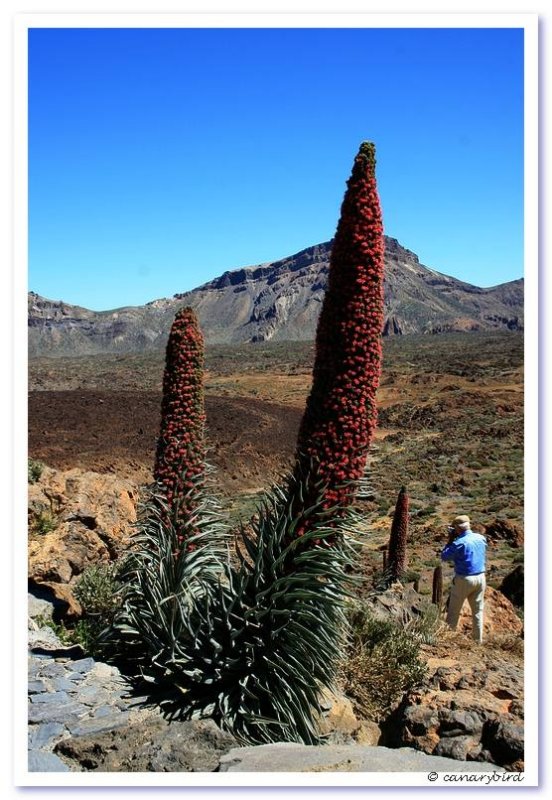 Red Tajinaste
Red Tajinaste(Click photos to enlarge)
One June day I decided it was time to take another drive up to the higher regions of this island. The Teide volcano, at a height of 3718 meters is the third largest volcano on earth and looms over the island landscapes. It has been listed as a UNESCO World Heritage Site since June 2007.
 Wild Flowers
Wild FlowersThe area around the volcano (the caldera), called Las Cañadas del Teide is preserved as a national park with a cable car which travels up the side of the volcano and a government hotel, one of the chain of National Paradores.

It used to be possible for hikers to climb to the summit of the crater where the ground is hot and the air is thin.
But access has since been restricted for the sake of preserving the delicate environment and plant life. Now one must apply for a permit (link to how to apply) to go to the summit.
Here is the cable car which runs daily up the side of the volcano except in bad weather. Information and prices are on this link. Access to the crater is not allowed.

 As this island is shaped roughly like a pyramid, there are curiously several microclimates which one passes through on a drive up to the caldera of the volcano. Here near sea level where we live, we see palm trees and bougainvillae in a subtropical zone. But a few meters higher the vegetation changes, and as we climb we reach a pine forest where we are soon up in sunshine and looking down on what is known here as "the sea of clouds".
As this island is shaped roughly like a pyramid, there are curiously several microclimates which one passes through on a drive up to the caldera of the volcano. Here near sea level where we live, we see palm trees and bougainvillae in a subtropical zone. But a few meters higher the vegetation changes, and as we climb we reach a pine forest where we are soon up in sunshine and looking down on what is known here as "the sea of clouds". Pine Forest
Pine Forest
 Sea of Clouds
Sea of CloudsAt this level there is a trout farm located at a place called Aguamansa. The fish are for sale and can be seen on the menus of local restaurants.
 Aguamansa Trout Farm
Aguamansa Trout FarmAbove the pine forest we come to a sub alpine zone with low scrub vegetation and the beginnings of lava rock and volcanic sands.

 One famous area is a group of large rocks called the Roques de Garcia and one of particular interest is called the Roque Cinchado, seen at left here below.
One famous area is a group of large rocks called the Roques de Garcia and one of particular interest is called the Roque Cinchado, seen at left here below.
 Viewpoint near Roques Garcia
Viewpoint near Roques Garcia
One aim of many photographers and tourists alike is to see and photograph the red Tajinaste flower (Echium Wildpretii) which is native to the Teide.

 It grows up to 3 meters (9 ft) high, is a biennial and flowers in the early summer. I took many photos of these.
It grows up to 3 meters (9 ft) high, is a biennial and flowers in the early summer. I took many photos of these.

 Closeup
CloseupThe fantastic lunar landscape of lava rock and sand has been the location for the filming of more than one science fiction movie.

 We stopped for lunch at one of the little restaurants high above the clouds. Here is an inside view:
We stopped for lunch at one of the little restaurants high above the clouds. Here is an inside view: The air was deliciously clear and fresh and the sky was an intense blue so we sat outside on the terrace.
The air was deliciously clear and fresh and the sky was an intense blue so we sat outside on the terrace. It must be very healthy to live up at this altitude. The clearness of the Canary Island skies is protected by law against light pollution. One reason why Europe's most prestigious telescopes have been built here and on the neighbouring island of La Palma is that they share, along with Hawaii, an especially clear atmosphere for astrophysical studies.
It must be very healthy to live up at this altitude. The clearness of the Canary Island skies is protected by law against light pollution. One reason why Europe's most prestigious telescopes have been built here and on the neighbouring island of La Palma is that they share, along with Hawaii, an especially clear atmosphere for astrophysical studies.Getting back to our trip....we unfortunately missed seeing the great panorama of yellow flowers which I discovered later when talking to friends, is seen on another route leading up to Las Cañadas in early summer. There are several approaches to Las Cañadas and perhaps another day we may be able to repeat the trip using a different route. We drove up from Puerto de la Cruz and La Orotava. It was a long and tiring drive as it is a constant winding road, but I'm glad that this time I have a car with automatic transmission, power steering and air conditioning....none of which I had in my old car the last times I drove this run. There is so much to see and do here on this island one needs to go out driving every day!
 Here we are driving down through the clouds as we descend the mountain.
Here we are driving down through the clouds as we descend the mountain.Here are some of my photos set to the music of the Canary Island group TABURIENTE.

1 comment:
Gorgeous, simply gorgeous!
Post a Comment